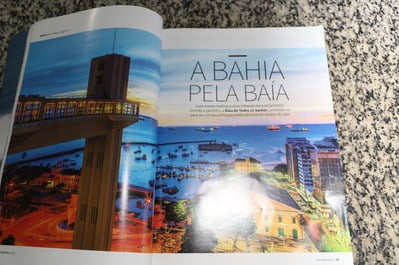
Baía de Todos os Santos is featured in issue no. 374 of Revista Náutica, which has been publishing nautical content from all over the country for over 30 years and is a reference on the subject.
Approximately 9 km long from Ponta da Penha to Ponta de Itaparica, All Saints Bay is the second largest bay in the world and the largest in Brazil. Composed of more than 50 islands, the most important are: Ilha dos Frades, Ilha de Maré, Ilha de Bom Jesus and the ecological station of Ilha do Medo.
The economic potential of the place is always on the agenda when it comes to public investment. Last Thursday (February 18), the State Secretary of Tourism, Fausto Franco, and the Captain of the Ports, Commander Paulo Gonzalez, met to evaluate the requalification and/or construction works of nautical bases, docks, tourist terminals, which includes the Wanderley Pinho Museum in Candeias. In total, there are 13 interventions and the investments reach the amount of R$ 78 million.
In November of last year, the state took an important step to encourage nautical tourism in Bahia, with the sinking of the ferry boat Agenor Gordilho and the tugboat Veja in the sea of Baía de Todos os Santos. The vessel that transported around 600 passengers per trip from Salvador to Itaparica for 45 years and was decommissioned in 2017, took 1h30min to sink completely 1.5km from the coast and is 36 meters deep.
Environmental authorities dictated all the rules to be followed so that there would be no damage to the sea in Bahia and they state that within a year of the shipwreck, the ship should already be covered in corals and other marine biomes.
In addition to this, there are 20 more shipwreck sites in All Saints Bay, with the Galeão Sacramento being the oldest of them. The vessel set sail from the Lisbon Post in February 1668 and tragically sank on Rio Vermelho beach in Salvador in May of the same year.
Like the Agenor Gordilho, the Galeão also had the capacity to transport up to 600 people.

